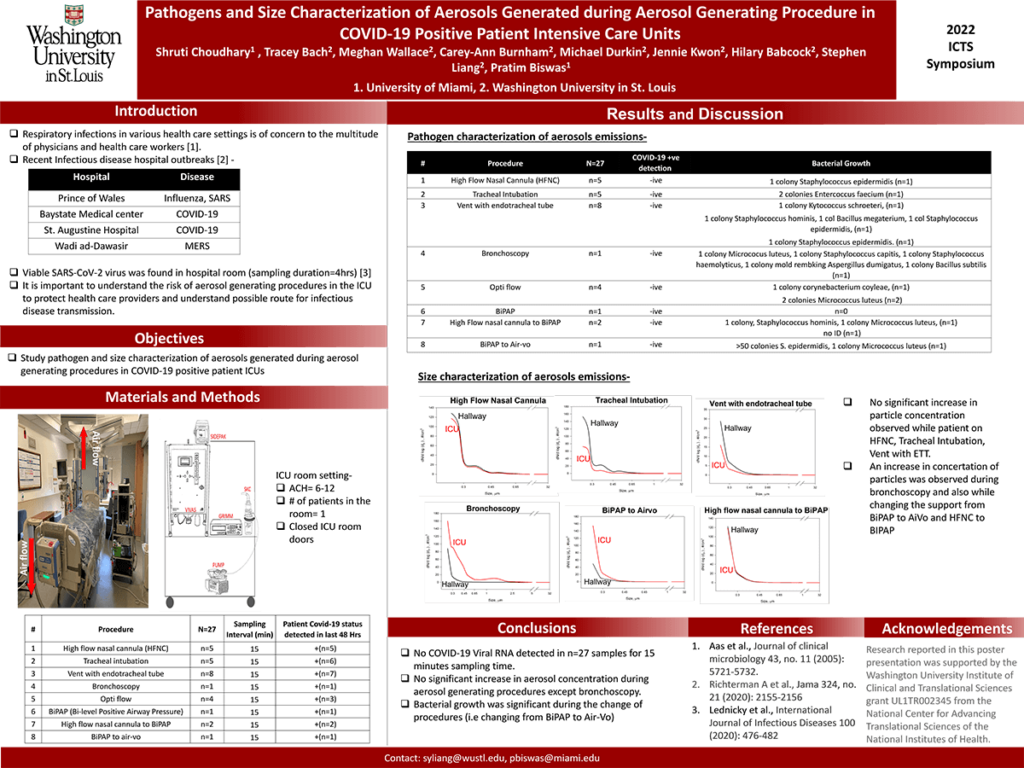Introduction: Airborne transmission of SARS-CoV-2 is thought to be greatest during aerosol-generating procedures (AGP) in the hospital. The true risk posed by AGPs is not well understood.
Methods: Aerosol capture and real-time particle size characterization were performed in the medical intensive care unit (MICU) during mechanical ventilation, bi-level positive airway pressure (BiPAP) ventilation, high-flow nasal cannula (HFNC), nasal high-flow oxygen (Optiflow™), and bronchoscopy. Both SKC BioSampler and BioSpot viable virus aerosol sampler (VIVAS) were used to capture air samples during a 15 min period for bacterial culture and molecular respiratory virus detection (including SARS-CoV-2). Particle size characterization was performed using the TSI SidePak personal aerosol monitor, which measures particle mass concentration (PM 10, PM 2.5, PM 1.0), and the GRIMM portable aerosol spectrometer, which measures particle size distribution (0.25 to 35.15 µm). Instruments were positioned 3 ft from the patient.
Results: AGPs sampled included mechanical ventilation by endotracheal tube (n=10) or by tracheostomy (n=3), BiPAP ventilation (n=1), HFNC (n=6), Optiflow™ (n=5), and bronchoscopy (n=2). In addition, transition from HFNC to BiPAP (n=1) and from BIPAP to humidified nasal high-flow oxygen (Airvo™)(n=1) were also sampled. Bacterial cultures yielded a wide range of organisms, likely originating from the patient airway. No SARS-CoV-2 was detected. Bronchoscopy yielded the greatest number of aerosols in the size range of 10 nm to 1µm; PM2.5 was 800 times higher than the baseline. Other AGPs including HFNC, Optiflow™, and transitioning from BiPAP to Airvo™ yielded increases in particles in the size range of 20 to 100nm and 200 to 500 nm.
Impact: In a real-world sample of AGPs involving COVID-19 MICU patients, viable bacteria and fungi were isolated from air samples obtained within 3 ft of the patient. No respiratory viruses, including SARS-CoV-2, were detected. An increase in number concentration of aerosols was greatest with bronchoscopy. The risk of aerosol generation during other common AGPs may be less than previously thought.
Organization – Washington University in St. Louis
Choudhary S, Habrock Bach T, Wallace M, Burnham CA, Durkin M, Kwon J, Babcock H, Liang SY, Biswas P
